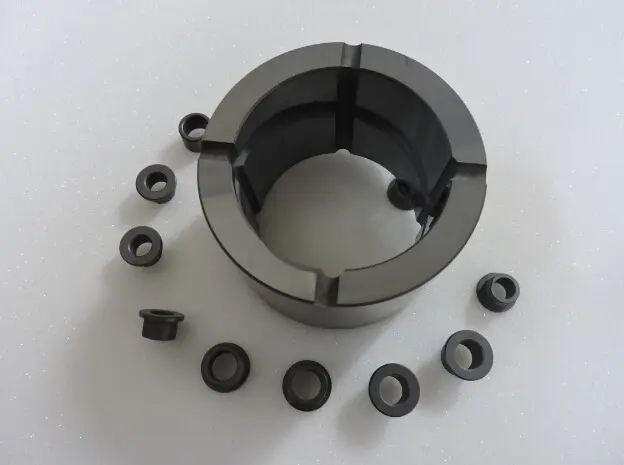The industrial production method of reaction-sintered silicon carbide is to extract high quality quartz sand and calcined petroleum coke in an electric heating furnace. The refined silicon carbide blocks are made into commodities with various particle size distributions by crushing, strong acid and alkali washing, magnetic separation equipment and screening or water separation.
Silicon carbide has two common basic types of black silicon carbide and green silicon carbide, all of which belong to α-SiC. ① Black silicon carbide contains about 95% SiC, and its ductility is higher than green silicon carbide, most of which are used to produce and process raw materials with low tensile strength, such as laminated glass, porcelain, stone, refractory, pig iron and precious metals. ② Green silicon carbide contains SiC about 97% above, self-sharpening is good, most of them are used for the production and processing of carbide tools, titanium metal and optical lenses, and are also used for honing cylinder liner and polishing high-speed steel tools. In addition, there are cubic meters of silicon carbide, which is a light green crystal made by a new process, and is used to produce a mold suitable for bearing super-finishing, which can make the surface roughness from Ra32 ~ 0.16μm a processing to Ra0.04 ~ 0.02μm.
Main uses of reaction sintering silicon carbide
(1) As a wear-resistant material, it can be used as a mold, such as sand wheel, whetstone, grinding wheel, sand tile, etc.
(2) As a deoxidizing agent and corrosion resistant material for metallurgical industry. Silicon carbide mainly includes four main uses, namely: functional ceramics, high-end refractory materials, wear-resistant materials and smelting raw materials. At this stage, silicon carbide roughage can be supplied in many ways, which is not a high-tech product, and the application of nano-silicon carbide powder with very high scientific and technological content is unlikely to produce scale effects in the short term.
(3) high-purity single crystal, suitable for the production of semiconductor materials, the production of silicon carbide chemical fibers.
Scope of application: For 3-12 feet photovoltaic cells, photovoltaic cells, potassium arsenide, quartz resonators and other line cutting. Solar photovoltaic industry, semiconductor industry, piezoelectric crystal industry chain engineering project raw material processing.
Reactive sintering silicon carbide – formation reasons
The ultra-high pressure and high temperature standard produced in the earth’s core is sprayed out of the ground with the lava. Such as Thailand, Australia, China’s Shandong, the United States and other countries. Steel jade is produced by touch metamorphism. Such as Myanmar, Kashmir, China’s Anhui and other regions. Rubies in the world are mainly derived from placers. It is through a variety of original ecological emeralds, blue gems by erosion aggregation reaction sintering silicon carbide with pure natural silicon ore, carbon, wood slag, industrial salt as basically generated raw materials, in the electric heating furnace heating reflected generation. The addition of wood slag is to make a small piece of mixed material at high temperature to produce a porous structure, which is conducive to reflecting the large-scale vapor body and volatility from which to remove, to prevent explosion accidents, due to the generation of 1 ton of silicon carbide, may produce about 1.4t of carbon monoxide (CO). The role of industrial salt (NaCl) is conducive to removing aluminum oxide, compounds and other residues in the material.
Post time: Jun-19-2023






